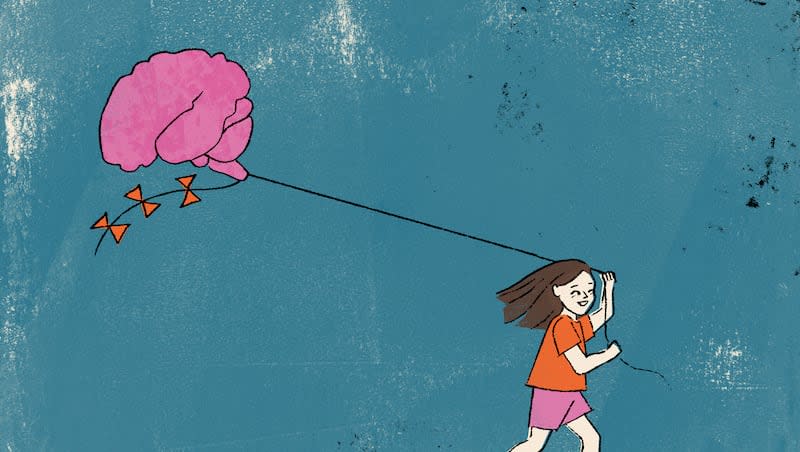CDC study says 1 in 9 children have ADHD

By 2022, 7.1 million children — about 1 in 9 — had been diagnosed with attention deficit/hyperactivity disorder, according to a new Centers for Disease Control and Prevention study. About 1 million of them got their diagnosis since 2016, which was when the previous most recent national estimate was done.
The numbers are based on 2022 National Survey of Children’s Health data on 45,000 children ages 3-17, and the study was published in the Journal of Clinical Child & Adolescent Psychology. The researchers also looked at severity, presence of co-occurring disorders and treatments, including medication and behavioral therapy.
The updated numbers come at a time when the U.S. Food and Drug Administration says Adderall, one of the most-prescribed treatments for ADHD, is in short supply nationwide and the situation isn’t likely to get better before the end of the year. Per the FDA statement, “FDA is in frequent communication with all manufacturers of amphetamine mixed salts, and one of those companies, Teva, is experiencing ongoing intermittent manufacturing delays. Other manufacturers continue to produce amphetamine mixed salts, but there is not sufficient supply to continue to meet U.S. market demand through those producers.”
According to the CDC prevalence report, while 7.1 million children have ever been diagnosed with ADHD, 6.5 million of them currently have the disorder. Of those with existing ADHD, the report said nearly 42% had mild ADHD, 45% were classified as moderate and not quite 13% had severe ADHD. Just under 78% had “at least one co-occurring disorder.” About half of the children with current ADHD take medication for the condition and just over 44% have received behavioral treatment in the past year. The report also notes that 3 in 10 children who have ADHD are not being treated for it.
The CDC study authors write that the data “can be used by policymakers, government agencies, healthcare systems, public health practitioners and other partners to plan for needs of children with ADHD.”
About ADHD
The CDC says ADHD is one of the most common neurodevelopmental disorders of children and that symptoms often last into adulthood. They present most often as inattentive or as hyperactive-impulsive. Some people have both.
The study notes that those with complex ADHD may also have mental, behavioral and developmental disorders, in addition to the ADHD. And they add that those with an ADHD diagnosis “are more likely to experience poor health outcomes like obesity, chronic illness, and accidental injury, as well as have increased healthcare utilization compared to peers without ADHD.”
According to Medical News Today, “Attention deficit hyperactivity disorder (ADHD), also referred to as Attention Deficit Disorder (ADD), is one of the most common childhood conditions that involve behavioral symptoms such as inattentiveness, hyperactivity and impulsiveness. Although the condition may begin during childhood, it can continue through adolescence and adulthood. Signs of ADHD include a short attention span or being easily distracted, restlessness, constant fidgeting or overactivity and being impulsive. ADHD can be hard to diagnose and even harder to understand.”
Cambridge scientists believe that children who have trouble regulating their emotions — sometimes seen as depression, anxiety and outbursts — could be exhibiting a core symptom of ADHD. Their study, just published in Nature Mental Health, found that about half of children with ADHD have some emotional dysregulation, but that Ritalin, which is commonly prescribed for ADHD, doesn’t treat that symptom well, they reported in a news release.
Treating ADHD
Treatment for ADHD is very specific, according to the CDC study, which said medication is the most common. Training parents in behavior therapy is the preferred first-line treatment in children younger than 6, while for those 6-11, medication and behavior therapy together is recommended. Medication is recommended for adolescents 12-17, along with behavioral interventions if they are available. Additionally, “behavioral classroom management, behavioral peer interventions, and organizational training have demonstrated well-established effectiveness.”
It’s not clear whether cases are rising or experts are getting better at diagnosing the disorder. But the study’s lead author, Melissa Danielson, a CDC statistician, believes more doctors, parents, teachers and even kids are familiar with the symptoms. “There’s more providers that are comfortable with making those diagnoses and treating ADHD, which can allow for children to be helped by different medications or behavior therapy or school services,” she told NBC News. “So since there are more opportunities for these kids to be helped, I think there’s more incentive to get that kind of diagnosis.”

